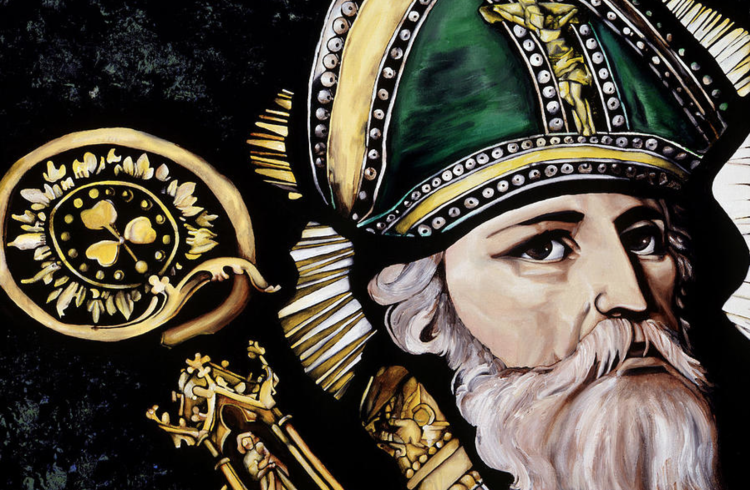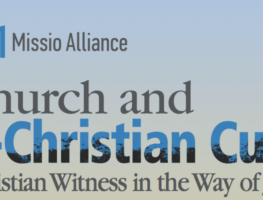This post originally appeared at John Hawthorne’s blog. We are happy to republish it here for the Missio audience!
Dramatic Shifts in American Culture
As a sociologist, I’ve been as interested in the dramatic shifts in religious life and American Culture as the next social observer. The data is compelling.
We’ve seen a dramatic increase in the percentage of Americans claiming no religious affiliation (the Nones), the collapse of Cultural Christianity (which was not a bad thing), major demographic shifts in the mainline churches, and new pressures on traditional evangelical churches. Attitudes toward same-sex marriage have shown massive change in a remarkably short period of time. Religious freedom claims are being made by those from non-Christian religions (or from no religion at all).
It’s all a little overwhelming. It’s no surprise that many in the Christian world worry about persecution (in spite of a near absence of it in the American context). Certainly the landscape is shifting and we’re trying to figure out where we fit.
Many people are attracted to Rod Dreher’s suggestion of The Benedict Option. Drawing upon the collapse of Rome around the turn of the sixth century, he argues:
Around the year 500, a generation after barbarians deposed the last Roman emperor, a young Umbrian man known to history only as Benedict was sent to Rome by his wealthy parents to complete his education. Disgusted by the city’s decadence, Benedict fled to the forest to pray as a hermit.
Benedict gained a reputation for holiness and gathered other monks around him. Before dying circa 547, he personally founded a dozen monastic communities, and wrote his famous Rule, the guidebook for scores of monasteries that spread across Europe in the tumultuous centuries to follow.
Rome’s collapse meant staggering loss. People forgot how to read, how to farm, how to govern themselves, how to build houses, how to trade, and even what it had once meant to be a human being. Behind monastery walls, though, in their chapels, scriptoriums, and refectories, Benedict’s monks built lives of peace, order, and learning and spread their network throughout Western Europe.
They did not keep the fruits of their labors to themselves. Benedictines taught the peasants who gathered around their monasteries the Christian faith, as well as practical skills, like farming. Because monks of the order took a vow of “stability,” meaning they were sworn to stay in that place until they died, Benedictine monasteries emerged as islands of sanity and serenity. These were the bases from which European civilization gradually re-emerged.
A quick Google search found other choices. One could opt for the Dominican Option or the Jeremiah Option and I’m sure that more research would find many other Options.
I understand the appeal of the Benedict Option. It’s provides a focus on maintaining what we know in a changing world. It offers the hope of re-engaging the culture in some hoped-for future when things are more amenable to Christian thinking.
But there is another way. It’s a way that relies upon heightened engagement in place of withdrawal.
I’m calling it The Patrick Option.
The Patrick Option relies upon heightened engagement in place of withdrawal. Click To Tweet
How St. Patrick Saved Western Civilization
I’ve been exploring this idea for the 20 years since Thomas Cahill wrote his compelling book, How the Irish Saved Western Civilization. But my thinking was greatly expanded by the work of George Hunter from Asbury Seminary. I heard him give a presentation in the early 2000s on The Celtic Way of Evangelism and immediately bought the book of the same title upon which it was based. At the center of the story is Patrick — the young man who was taken by an Irish band as a slave, who escaped to study in Rome and become a Bishop, and who then felt a Macedonian-like call to return to the very island of his captivity.
I’ve spent the last few days reading some new Patrick material. One book is Vulnerable Faith: Missional Living in the Way of Saint Patrick by Jamie Arpin-Ricci. This book focused on Patrick’s willingness to put himself at risk, to engage in chaos, and to build true community. Jamie’s book also draws heavily on Scott Peck’s work on community (which I use in my own book) and lessons from 12-step movements. The other book is a second edition of George Hunter’s book, largely rewritten after a decade since the first book.
When Patrick got to Ireland, he used a very different strategy than his counterparts in the Roman Church. Where they were focused on the importance of believing the right things as a prerequisite for belonging, Patrick engaged the barbarian kings in Ireland and built relationships. As Hunter observes, for him and other Celtic missionaries, the strategy was to build relationship and invite people into the Christian community for conversation, so that people would come to belief.
The Roman Church knew how to extend Christianity alongside the colonization of the Roman Empire. In religious matters just as in political matters, all eyes turned to Rome. Not so with Patrick and his colleagues. He was engaging a non-Christian culture and participating in enough community building so that indigenous practices were retranslated into Christian ones (Hunter’s book is full of examples).
On Patrick's influence: 'Indigenous practices were retranslated into Christian ones.' Click To Tweet
Patrick v. Rome
It’s no understatement to observe that Patrick’s work was not looked upon favorably by the Roman Leadership (some called him a Pelagian). He even got the date of Easter wrong!
But as Arpin-Ricci’s book illustrates, Patrick was willing to be open in his faith — to put himself at risk, even the risk of being thought wrong. He didn’t just see himself as missionary to the Irish — he thought himself one of them. He identified with those he was trying to reach.
Hunter explains it like this:
What was the difference between Eastern monasteries and Celtic monastic communities? Briefly, the Eastern monasteries organized to protest, and escape from, the materialism of the Roman world and the corruption of the Church; the Celtic monasteries organized to penetrate the pagan world and to extend the Church. The Eastern monks often withdrew from the world into monasteries to save and cultivate their own souls; Celtic leaders often organized monastic communities to save other people’s souls.
Patrick opened himself up to truly engage the barbarians around him and in so doing modeled the God that was preveniently reaching out to them. They weren’t actually treated as barbarians but engaged as potential friends created in the Image of Almighty God.
Vulnerable Journeys into Hostile Territory
Both Vulnerable Faith and Celtic Way are essentially optimistic visions of God’s work in the World. We go forth and engage others. We hear their stories and we share ours. We look for common ground upon which we can build.
That means that we need to spend more time with those Nones and Dones in our midst. We need to understand why one-third of churchgoing millennials are supportive of same-sex marriage. We need to know more about how individuals are navigating this confusing thing we call family. We need to hear the formerly religious talk of their disaffection with faith and institutional church. In hearing their stories and engaging them in authentic Christian community, we have the possibility of communicating the Gospel in new and fresh ways that can connect to their lived experience.
We need to spend more time with those Nones and Dones in our midst. Click To Tweet
Taking such vulnerable journeys into “hostile territory” is daunting. But Patrick didn’t think he was doing ministry in his own strength and certainty but rather in obedience to the Holy Spirit who was leading him (and others) through those meaningful conversations.
I’ll close by sharing George Hunter’s final paragraph:
The supreme key to reaching the West again is the key that Patrick discovered— involuntarily but providentially. The gulf between church people and unchurched people is vast, but if we pay the price to understand the unchurched, we will usually know what to say and what to do. If they know and feel we understand them, by the tens of millions they will risk opening their hearts to the God who understands them.
This is not the time for Christians to withdraw. This is the time for us to engage as we did 1500 years ago.
This is not the time for Christians to withdraw. This is the time to engage like Patrick did. Click To Tweet



Missio Alliance Comment Policy
The Missio Alliance Writing Collectives exist as a ministry of writing to resource theological practitioners for mission. From our Leading Voices to our regular Writing Team and those invited to publish with us as Community Voices, we are creating a space for thoughtful engagement of critical issues and questions facing the North American Church in God’s mission. This sort of thoughtful engagement is something that we seek to engender not only in our publishing, but in conversations that unfold as a result in the comment section of our articles.
Unfortunately, because of the relational distance introduced by online communication, “thoughtful engagement” and “comment sections” seldom go hand in hand. At the same time, censorship of comments by those who disagree with points made by authors, whose anger or limited perspective taints their words, or who simply feel the need to express their own opinion on a topic without any meaningful engagement with the article or comment in question can mask an important window into the true state of Christian discourse. As such, Missio Alliance sets forth the following suggestions for those who wish to engage in conversation around our writing:
1. Seek to understand the author’s intent.
If you disagree with something the an author said, consider framing your response as, “I hear you as saying _________. Am I understanding you correctly? If so, here’s why I disagree. _____________.
2. Seek to make your own voice heard.
We deeply desire and value the voice and perspective of our readers. However you may react to an article we publish or a fellow commenter, we encourage you to set forth that reaction is the most constructive way possible. Use your voice and perspective to move conversation forward rather than shut it down.
3. Share your story.
One of our favorite tenants is that “an enemy is someone whose story we haven’t heard.” Very often disagreements and rants are the result of people talking past rather than to one another. Everyone’s perspective is intimately bound up with their own stories – their contexts and experiences. We encourage you to couch your comments in whatever aspect of your own story might help others understand where you are coming from.
In view of those suggestions for shaping conversation on our site and in an effort to curate a hospitable space of open conversation, Missio Alliance may delete comments and/or ban users who show no regard for constructive engagement, especially those whose comments are easily construed as trolling, threatening, or abusive.